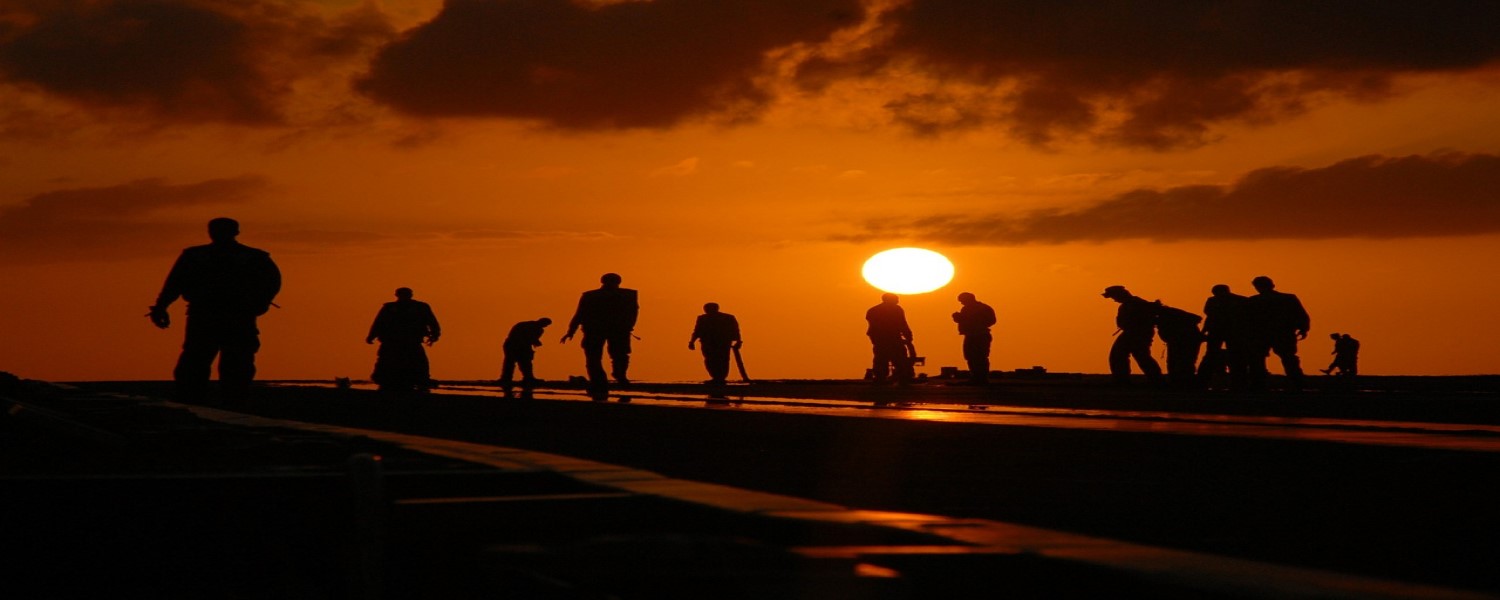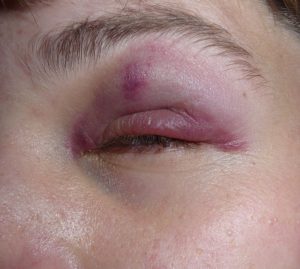Learn from Experiences: Use This Process to Do It Better!
Sometimes, we need to learn things the hard way! We all make mistakes in life, that is how we learn and how we grow – the key is not making the same mistakes twice. Let me take you back to something that happened to me back in 2011. It was a Saturday morning, and I was at the gym working out with my usual posse of friends before heading to a big college football game later that day. It was near the end of my workout and I was doing abs with my good friend Jeff. We were doing an exercise where one of you is doing sit-ups on a decline bench and the other is throwing a 15-lb medicine ball that you catch, do your sit-up and throwback.
Exactly like this:
When ‘it’ happened, I was the one standing and Jeff was the one on the bench. As I said, we all make mistakes, the key is learning from experiences, so we don’t make the same mistake twice. I am happy to say that using a technique called an after-action review, I learned from my experience and have not made the same mistake since. What was the mistake I made, and how did I use an after-action review to learn from it? You will have to wait until the end of this blog post about learning from experiences to find out!
Before we get back to that hot Fall Miami day 7 years ago…
…let’s briefly introduce you to something that I have used in both my professional and personal life for learning from experiences known as the after-action review. Most of us are not good at learning from experiences, both in our personal lives and in business, as has been documented by many social scientists. However, one of the few organizations that do a phenomenal job of systematically learning from experiences is the U.S. military. And back in the 1970’s, they created something called the…
After-Action Review
Which is a professional discussion that is used to give feedback to soldiers and units on their mission and task performances – both in training and in combat.
There are two types of after-action reviews: formal and informal. They are both conducted using the same format, both involve the exchange of ideas and observations, and both are focused on improving training efficiency. The main difference between the two is that formal after-action reviews involve more resources, planning, preparation, coordination and personal.

What is the Objective of an After Action Review?
The main objective of conducting an after-action review is to improve individual and team performance of the soldiers to meet or exceed expectations. To do that, soldiers and their leaders need to know what happened (or didn’t happen) during their training events, why they did or didn’t happen, and how they can sustain their strengths and improve upon their weaknesses. By using after-action reviews, leaders and units can increase their chances of getting maximum benefits from every training, mission or task by learning from experiences.
Why Should I Use an After Action Review in My Life?
I will answer this question with a question. What is the point of doing or experiencing something if you do not learn from it? By conducting an after-action review, whether formally or informally, in a group or individually, it gives you a chance to take some time and think and reflect. It gives you time to reflect on what you wanted to happen, what actually did happen, what you learned from it, and finally what you can do in the future to either sustain your outcomes or make them better.
How to Conduct an After Action Review – Use It or Lose It
After-action reviews that are used in the military involve 4 phases (planning, preparation, conducting, follow-up) and each phase consists of several steps. For our purposes, we are going to simplify things down to a 4-step questioning process that you can use individually or in groups – either at home or at work. If you think you would like to explore the exact steps and protocol used by the Army, you can check out the official document provided by the Headquarters of the Department of the Army which outlines AARs in detail here.
This 4-step questioning process is one that you can conduct individually, either in your head or by writing things down, or as part of a group (think your team at work or maybe your family).
The 4 questions, based on the after-action review process used by the military, are as follows:
(1) What was supposed to happen?
(2) What actually happened?
(3) What did I/we learn?
(4) What are the actions/steps I/we can take either now or in the future to improve my/our outcome?
To give you a bit more guidance, the after-action review guide provided by the military also provides some excellent…
Guidelines and Key Points to Remember…
When conducting an after-action review so that you are learning from experiences, which obviously is dependent on whether you are doing it solo or as a group exercise:
 Conduct the after-action review either during or right after the event/situation – so things are still fresh in your mind.
Conduct the after-action review either during or right after the event/situation – so things are still fresh in your mind.
 Involve all participants in the discussion.
Involve all participants in the discussion.
 Ask open-ended questions.
Ask open-ended questions.
 Look at both strengths and weaknesses.
Look at both strengths and weaknesses.
 The spirit of the discussion is key! Keep it positive, open and honest. The idea is not to blame or criticize, but to learn and improve!
The spirit of the discussion is key! Keep it positive, open and honest. The idea is not to blame or criticize, but to learn and improve!
 Make sure to link it to further actions and improvements – identify what you can improve, either fix the problem ASAP or revise how you will do things in the future to either sustain/improve a current practice or create a new one.
Make sure to link it to further actions and improvements – identify what you can improve, either fix the problem ASAP or revise how you will do things in the future to either sustain/improve a current practice or create a new one.
You are probably wondering about some places in your life that you can use an after-action review, no worries, I got your back.
When to Use It:
Some of the ways you can use after-action reviews in your life are:
Individually:
 To facilitate learning from experiences: Any time where you have set out to do something in your life.
To facilitate learning from experiences: Any time where you have set out to do something in your life.
 When mentoring or coaching someone.
When mentoring or coaching someone.
 If someone is sharing an experience/event with you.
If someone is sharing an experience/event with you.
 After a job interview, date, meeting, visit.
After a job interview, date, meeting, visit.
As a Group:
 During or after a meeting.
During or after a meeting.
 When teaching things to your kids/family.
When teaching things to your kids/family.
 At the end of a project, conference, event.
At the end of a project, conference, event.
Back to My Story…
So, as I was tossing the 15-lb medicine ball to my buddy Jeff, a cute girl came up and started talking to me. I kept throwing the ball to Jeff while talking to her, then all-of-a-sudden she accidentally knocked over a water bottle and it hit my foot. Without thinking, I looked down to see what it was and BOOM! I got a 15-lb medicine ball in the eye and within 10 minutes was sporting one of these:

Yup, I got a black eye. Both Jeff and the girl felt bad, but it was neither of their faults as the blame solely rested with me. After seeing stars for a couple of minutes and quickly putting some ice on my face, it was time for me to ensure that it never happened again by doing a quick informal after-action review in my head. I used the 4 questions from above, and it looked something like this:
(1) What was supposed to happen?
I was supposed to catch the ball and throw it back to Jeff, so he could work his abs.
(2) What actually happened?
I let myself get distracted and got a ball in the face! Jeff had a less than optimal ab workout and the cute girl felt bad.
(3) What did I learn?
Don’t let yourself get distracted!
(4) What are the actions I can take either now or in the future to improve my outcome?
Make sure to always keep your eye on the ball!
A few hours later, we met up with my Dad who was in town for the game and seeing as how I was wearing sunglasses on a cloudy day, he asked what was up. I lifted my glasses and said, ‘I took my eye off the ball’.
He smiled and said, ‘I bet you won’t do that again.’
‘Nope’, I replied. Thanks to using an after-action review, that is one mistake I won’t be ever making again.
Until next time, keep asking ‘what did I learn?’ so that you are always learning from experiences, and as always…PYMFP!
–Rick
Learning from Experiences – What Do You Think?
Have you ever used an after-action review or something similar in your life to facilitate your learning from experiences? What situations can you see yourself using it in the future? Please share in the comments below!
If you enjoyed this post, it would mean the world to us if you shared it with people you care about via any of the social media platforms below!
Popular Previous Posts:
Is Overcoming Hesitation Hard for You? Then Try This!
These Are 3 of the Most Popular Techniques for Taking Notes!
Breaking Bad Habits: This Is How to Do It!
References
Training Circular 25-20 – A LEADER’S GUIDE TO AFTER-ACTION REVIEWS – HEADQUARTERS DEPARTMENT OF THE ARMY – Washington, DC, 30 September 1993

We often used after action reviews in my job at professional development workshops. We used it to see what worked and when modifications or changes were required until we got it right. I used it every day in my classroom . Some methods of instruction needed changes for specific students. Sometimes various methods were tested until you found the working model. In our personal lives we find it harder to review our actions honestly because there is often an emotional involvement. We don’t critique our lives in the same way but we should.
Hi Eileen, Yup they definitely work. There is no doubt that many times we need to keep iterating, seeing what works and then modifying until we find a model that works – cannot agree with you more. Thanks! Rick
Another winner! In the Air Force, we used to call it ‘the critique’. Review all aspects of the training session – but in a positive way. “Next time, why not try this approach”. For maximum benefits, the critique must occur darn near immediately afterwards.
In personal or life situations, a critique can be quite helpful after finishing up something you have never attempted before. Like changing the fuel pump in my MG while laying on my back in a San Diego parking lot. I had a spare pump, and all the right tools,, but it took forever due to me never have done it before.
Hey Dave, Thanks! I think the key takeaway for me in your comment, is “in a positive way!” Love it and agree that it needs to occur as soon after as possible. Thanks again and have a great weekend! Rick